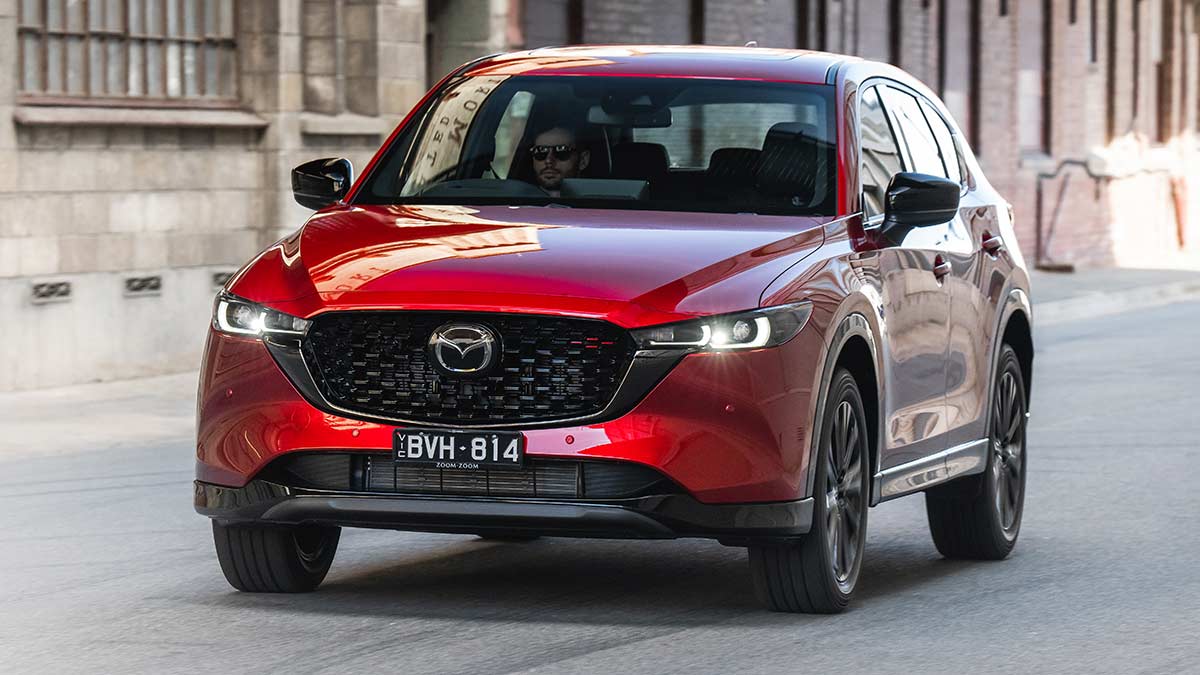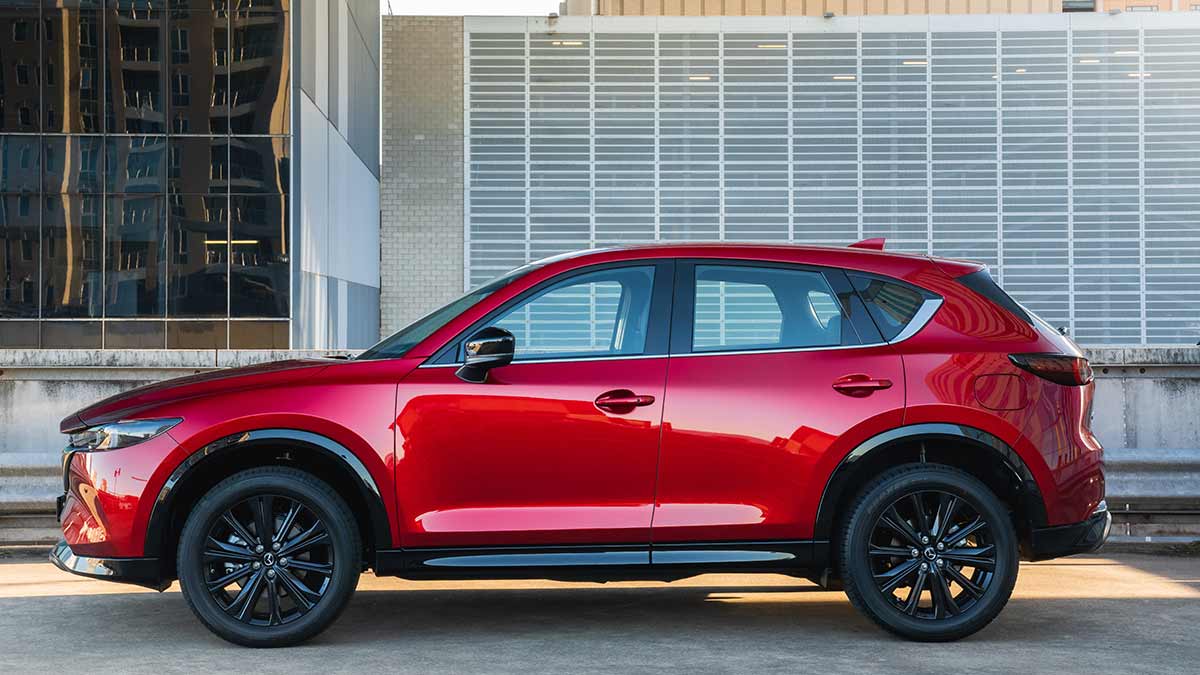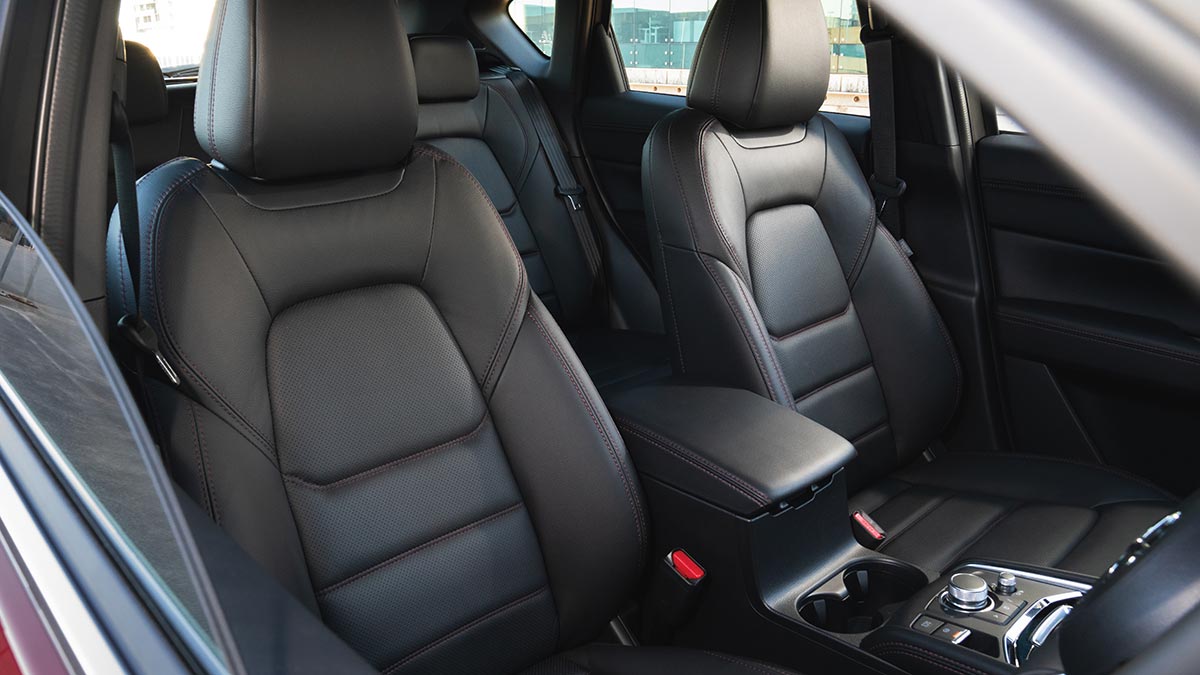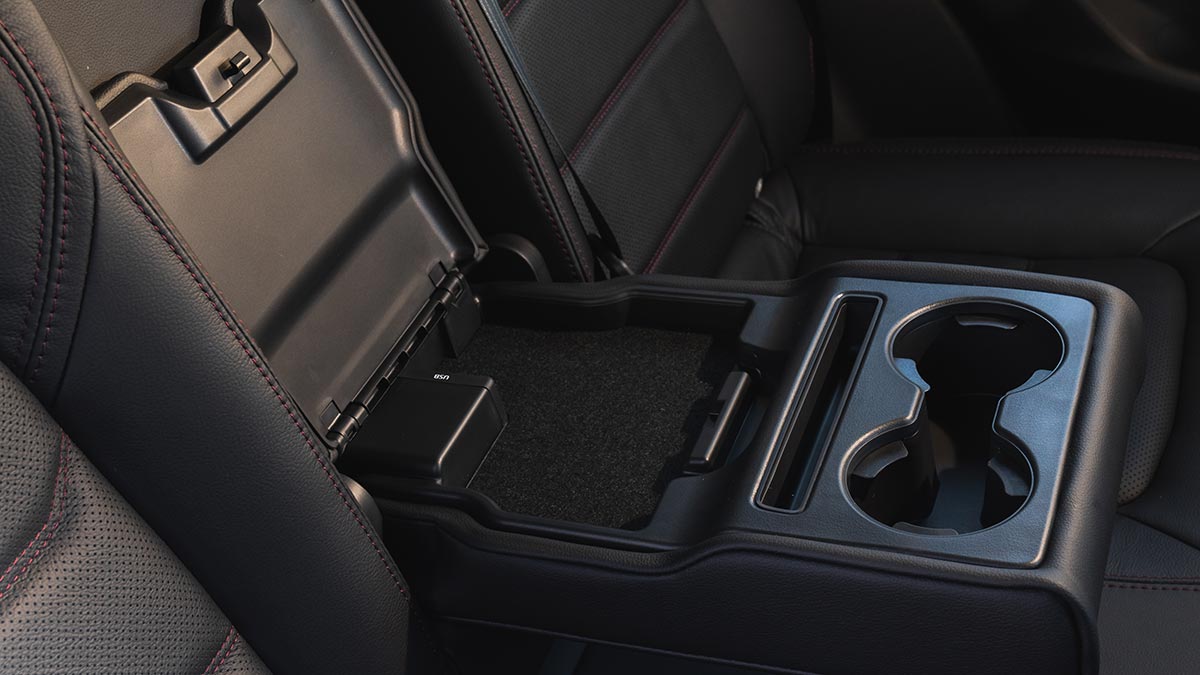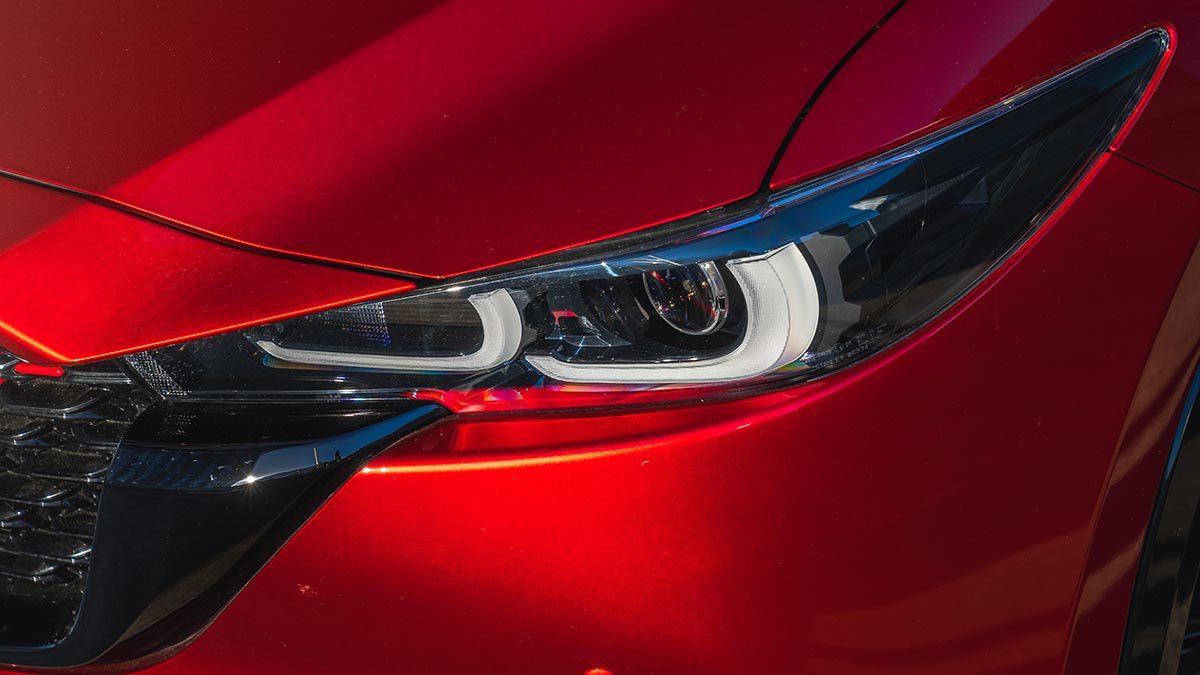The ninth-generation Toyota HiLux has arrived, bringing with it a futuristic forward exterior design, more safety and tech and the same rugged capability owners love. Will the updates tempt private buyers away from the Ford Ranger or are they just enough to keep fleets onside?
2022 Mazda CX-5 first drive launch review

Mazda’s perennially popular medium SUV has been tweaked yet again to keep pace with the trendier Toyota RAV4 and Kia Sportage rivals.
Age isn’t slowing Mazda’s CX-5 down. Five years into its lifespan, the second-generation of the mid-sized SUV continues to be one of the top-selling vehicles in the medium SUV segment.
With just a couple of years to travel before a new model is due, Mazda has given the latest iteration of the CX-5 the mildest of makeovers. Part of that is to keep it fresh and new-looking in the eyes of a casual beholder; the other is to align the looks, particularly the LED headlamps, with the CX-60 due to arrive here later this year.
The model range has also been rationalised, though there are still four engine options and the choice of front or all-wheel drive.
On this page
- How much does the Mazda CX-5 cost?
- How safe is it?
- What's it like inside?
- What's under the bonnet?
- How does it drive?
- Should I buy one?
How much does the Mazda CX-5 cost?
Increased pricing is a given for any new version, compounded now by rising production costs and ongoing semiconductor shortages (Ukraine refines around 50 per cent of the global neon gas supply used to power photolithographic lasers that etch computer chips).
Mazda has largely limited the damage this time around, with price rises averaging around $1000, depending on the version.
The range starts at $32,190 plus on-roads for the Maxx variant powered by a 2.0-litre four-cylinder petrol engine. That’s with a manual transmission, which few will choose and is only offered on this variant. The six-speed auto adds $2000.
The Maxx Sport is the most popular member of the CX-5 cast, accounting for 31 per cent of sales. A front-wheel-drive auto matched to a 2.5-litre engine is real value (compared to the Maxx) at $37,990, rising to $40,490 for the all-wheel-drive version.
It adds LED fog lamps, dual-zone air-conditioning, a centre armrest in the rear seats with a pair of USB charge points, satellite navigation on the 8.0-inch infotainment screen and an auto-dimming rear mirror which will be appreciated by anyone who does any appreciable amount of night driving out of the metropolitan area.
The all-wheel-drive Touring variant is $42,380 and is only available with the 2.5-litre petrol engine.
The 2.2-litre turbo-diesel engine makes its first appearance in the Touring Active at a cost of $45,680, making the oil-burner $3000 dearer than opting for the 2.5-litre petrol engine.
The GT SP fires up at $48,790 with the 2.5-litre petrol engine and climbs to $51,290 when fitted with a turbocharged version of the same displacement engine.
Finally, the Akera costs $50,680 for the petrol engine, $53,180 with the turbodiesel and $53,680 for the turbocharged petrol.
How safe is the Mazda CX-5?
The CX-5’s five-star safety rating is based on the 2017 ANCAP testing, though Mazda has fettled the features to give it some of the latest technology.
You won’t find a centre airbag to stop the front-seat occupants from clashing heads. You will find night-time pedestrian detection by the autonomous emergency braking, with a detection range from 10-60km/h when driving forwards or 2-8km/h in reverse.
The AEB system itself operates up to 160km/h.
A head-up display is standard across the range, along with LED headlamps.
The Maxx Sport now benefits from traffic sign recognition and the Akera picks up improved LED headlamps with 20 segments that operate independently to illuminate or mask certain sections of the road.
Other standard equipment includes lane-departure warning, a lane-keep assist, blind-spot monitoring, rear cross-traffic alert, a reversing camera and rear parking sensors (front sensors are standard on the Touring version and above).
What’s the Mazda CX-5 like inside?
Quality counts and, despite starting to show its age, the fit and finish of the CX-5 is beyond reproach. It doesn’t look or feel as though it’s been built to a price point.
The biggest sign of its longevity is the infotainment display. The GT SP and Akera don’t have capacitive screens and the shape of the screen can’t match the newer, portrait-oriented designs.
The new seats are said to match the natural “S-curve” of the spine. They’re supportive enough (we’ll need a proper road test to decide how comfortable on long-haul trips), but the driver now seems to be positioned higher in the car than before. Some will like it, taller drivers perhaps less so.
There’s now a 7.0-inch digital display in the middle of the three-dial analogue instrument panel and the head-up display is a welcome addition.
Touring versions and above now have wireless phone charging and there’s a powered tailgate on the GT SP and Akera.
The boot is a reasonable 438 litres and there’s no shortage of storage in the front or rear seats.
Isofix anchorages are found in the outboard rear seats, while there are three top tethers.
Mazda says this version also features improved noise reduction in the cabin, courtesy of “improved dampening control structure” (relocating the position of some of the bolt-on bits) and bolstering insulation such as the headliner.
What’s under the bonnet of the Mazda CX-5?
Four engine choices mean there’s pretty much something for everyone, except for a hybrid offering. This late into the model’s life cycle, you can’t blame Mazda for directing its resources into the next-gen vehicle.
The upcoming CX-60 will offer a plug-in hybrid that can haul up to 2.5-tonnes and hauls off the line to 100km/h in less than six seconds.
Back to the CX-5. The 2.0-litre four-cylinder petrol engine is exclusively fitted to the front-wheel-drive Maxx and can be paired with a six-speed manual or six-speed automatic transmission. Outputs are 115kW/200Nm and claimed combined fuel consumption is 6.9 litres/100km.
The 2.5-litre four-cylinder engine is good for 140kW/252Nm and boasts cylinder deactivation to save fuel when cruising. Fuel consumption is 7.2 litres/100km for front-wheel-drive versions and 7.4 litres/100km for AWD vehicles.
The 2.5 litre turbocharged petrol engine ups the ante to 170kW/420Nm and is only fitted to AWD versions. Fuel consumption is 8.2 litres/100km.
Long-distance drivers may prefer the diesel’s improved frugality. The 2.2-litre turbo-diesel packs 140kW/450Nm and returns a claimed combined fuel use of 5.7 litres/100km.
What’s the Mazda CX-5 like to drive?
On-road manners is where the CX-5 is still a stand-out performer. The overall balance of the SUV and its direct and progressive steering make it an enjoyable drive, rather than a typical high-riding wagon.
The 2.5-litre turbo engine found in the GT SP and Akera is a smooth and willing performer when required but muted and unobtrusive when cruising through the suburbs.
The above variants ride on 19-inch alloys that look great when the car is parked but, in tandem with a firmish suspension, deliver a slightly harsh ride around town, courtesy of the low-profile tyres.
The situation improves as the pace picks up and the suspension starts to work but smaller, sharp-edged hits can still be felt at speed.
Those looking for a more comfortable ride can always turn to the Maxx Sport. It sits on 17-inch alloy rims wrapped around tyres with a more generous sidewall to help fill out the arches and absorb the worst of those impacts.
Should I buy one?
If you’ve been in a CX-5 before, then this update won’t disappoint. It carries over the classic features that have made the Mazda such a hit in the mid-sized SUV class (it led the pack from 2013-2019), along with enough incremental improvements to justify putting it on your short list.
I’d also be driving the Toyota RAV4, Kia Sportage, Mitsubishi Outlander and Subaru Forester before I parted with a deposit.
Another big factor in the Mazda’s favour, though, is potential buyers know they’re not going to have to wait months to get their new car. And that will count for just as much as the minor updates.
The information provided is general advice only. Before making any decisions please consider your own circumstances and the Product Disclosure Statement and Target Market Determinations. For copies, visit racv.com.au. As distributor, RACV Insurance Services Pty Ltd AFS Licence No. 230039 receives commission for each policy sold or renewed. Product(s) issued by Insurance Manufacturers of Australia ABN 93 004 208 084 AFS Licence No. 227678.
